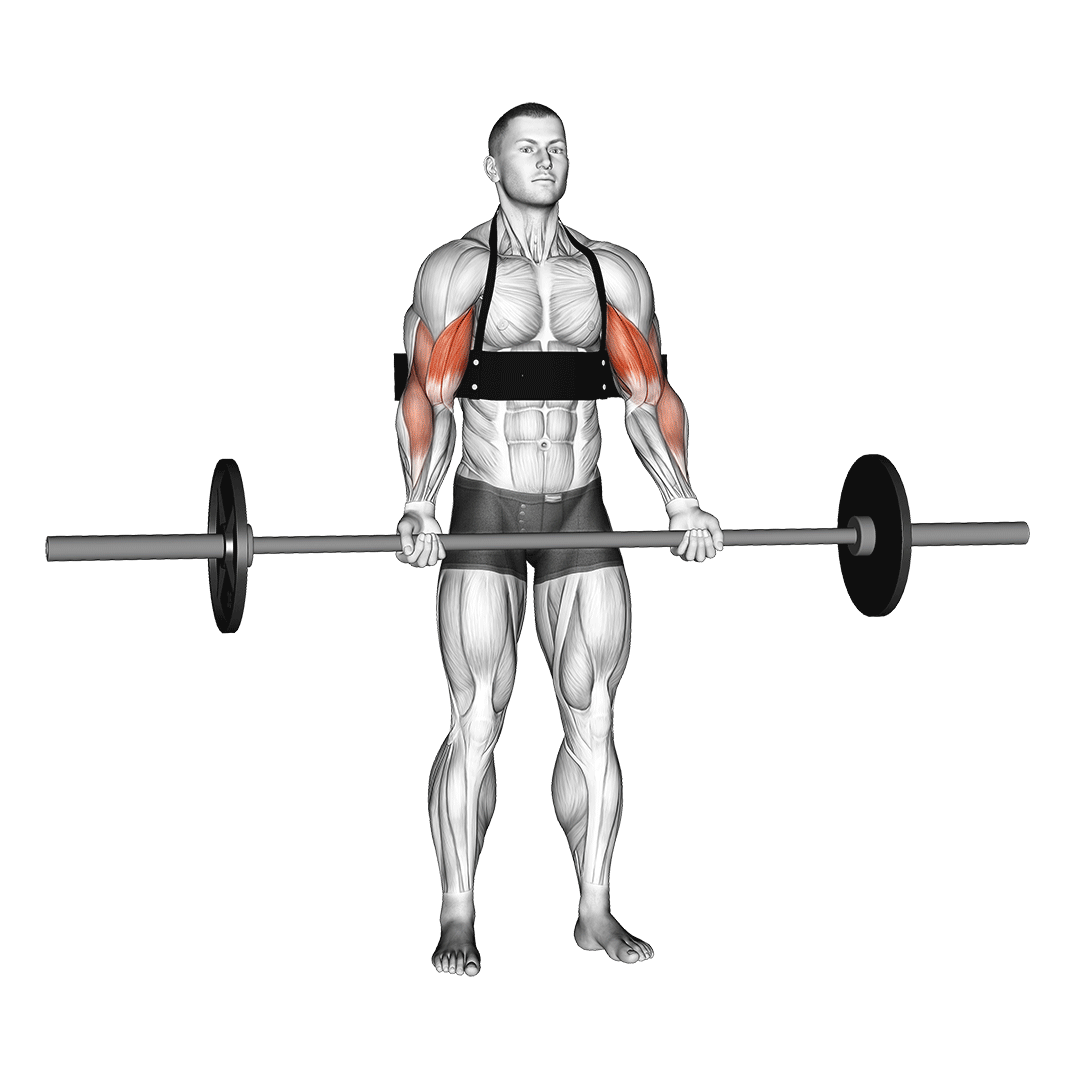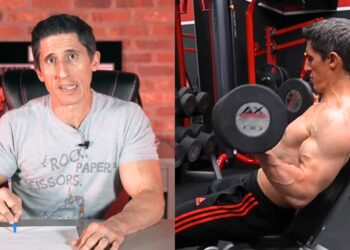Barbell Curls with an Arm Blaster create significant biceps growth and development. This exercise targets the biceps brachii muscle, which controls elbow flexion movements. The Arm Blaster device locks your elbows in position, ensuring each curl specifically targets the biceps muscles. This focused isolation creates maximum muscle engagement and produces better results for upper arm development.
Do this exercise two to three times each week, allowing proper muscle recovery between sessions. Stay well hydrated and perform adequate warm-up sets to prevent injury risks. Select weights that challenge your muscles while maintaining strict form. Avoid using body momentum or swinging motions, as these reduce muscle activation and increase injury potential. If you don’t have access to an Arm Blaster, standard barbell curls or resistance band exercises provide effective alternatives for biceps development.
Regular practice of Barbell Curls with an Arm Blaster leads to consistent biceps growth when performed correctly. Focus on proper technique and gradual weight progression. This foundational exercise builds both the strength and aesthetic appearance many people seek for their upper arms. Consistent practice delivers visible results in biceps size and definition.
How to Do a Barbell Curls with Arm Blaster

Stand tall with feet positioned shoulder-width apart. Hold the barbell at thigh level using an underhand grip. Secure the arm blaster against your torso to lock your elbows firmly at your sides.
- Engage your core muscles and maintain a straight spine position.
- Curl the barbell upward with controlled movement, focusing on biceps contraction.
- Continue lifting until the barbell reaches shoulder level, keeping elbows pressed against the arm blaster.
- Hold briefly at the peak position, then lower the barbell slowly to the starting point.
Breathe in during the lifting phase and breathe out while lowering the weight back down.
Level Up Your Fitness: Join our 💪 strong community in Fitness Volt Newsletter. Get daily inspiration, expert-backed workouts, nutrition tips, the latest in strength sports, and the support you need to reach your goals. Subscribe for free!
Common Mistakes
- Using Too Much Weight: Many lifters select weights beyond their control capacity, leading to form breakdown and potential injuries. Start with manageable weights that allow complete range of motion and full movement control.
- Not Keeping Elbows Locked: Moving elbows away from the arm blaster reduces biceps targeting and engages other muscle groups. Maintain constant contact between your elbows and the arm blaster throughout each repetition.
- Using Momentum: Body swinging reduces direct biceps work and creates injury risks. Focus on pure muscle power for each curl, avoiding any swinging or jerking motions.
- Ignoring Core Engagement: Lack of core stability leads to poor posture and potential back strain. Keep your core muscles activated throughout the exercise for proper body alignment.
- Failing to Control the Release: Quick weight drops eliminate important muscle tension and growth stimulus. Lower the barbell with controlled speed to maximize muscle engagement benefits.
Benefits
- Enhances Bicep Strength: This focused exercise directly targets the biceps muscles, creating substantial strength gains and muscle growth.
- Promotes Muscle Isolation: The arm blaster device ensures complete biceps engagement through each curl movement.
- Improves Posture: Maintaining proper back position and core engagement develops better overall posture habits.
- Increases Grip Strength: Regular barbell work develops forearm and hand strength for improved lifting capacity.
- Enhances Muscle Control: Controlled movements improve mind-muscle connection and movement precision.
Exercise Variations
Alternative Exercises
Safety Precautions
Maintain proper exercise form to prevent training injuries. Ensure your grip remains secure on the barbell. Select appropriate weights that allow complete movement control. Reduce weight immediately if form deterioration occurs. Incorrect technique creates strain risks for wrists, elbows, and shoulder joints. Focus on smooth, controlled movements without momentum assistance.
Complete thorough warm-up routines before strength training sessions. Include dynamic stretching and light cardiovascular activity to prepare muscle groups. Pay special attention to arm and shoulder preparation. After workouts, perform static stretching to enhance flexibility and reduce muscle soreness. These preparation and recovery practices improve exercise performance and reduce injury risks.
Monitor your form using mirrors or video recording for technique assessment. This feedback helps identify and correct form issues during progression. For those new to barbell training or heavy weight lifting, seek qualified trainer guidance. Professional instruction establishes proper lifting mechanics and safety practices for long-term training success.
Interested in measuring your progress? Check out our strength standards for Barbell Curl.








